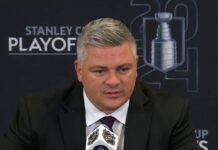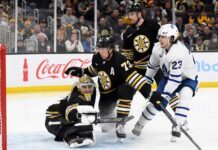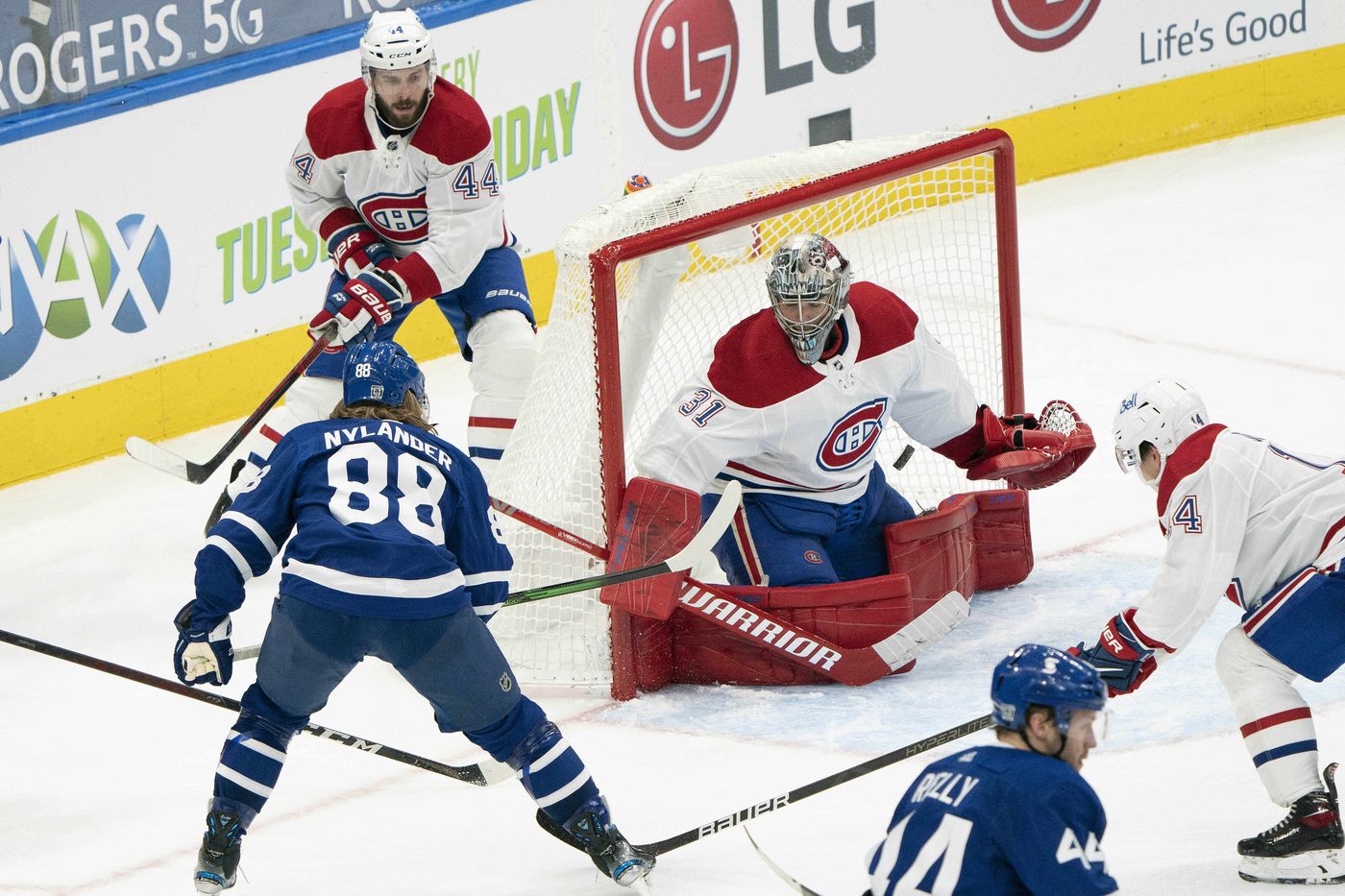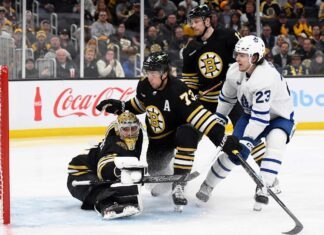There has been a lot of talk about the quality of the all-Canadian division, and rightfully so.
The past week represented a measuring stick of sorts as the two top teams in the division by points percentage squared off twice.
What did we learn?
Honestly, not much.
Each team won once in regulation. The Habs outshot the Leafs in both games, and they outhit Toronto drastically in one of the games. Based on how each team plays, that was probably to be expected. The Leafs scored one goal over the two games where one of their top two lines wasn’t on the ice, and that goal was driven by one of their top players (the Ilya Mikheyev goal where Zach Hyman drove the net to make the play).
Of their five goals in two games, two were scored at 4v4 and one was an empty netter.
There are some legit concerns about the Leafs’ 5v5 scoring, particularly from their depth lines. There are also legitimate concerns about how much they will really score when the power play dries up (five goals in two games where they went 0/3 on the power play). While it’s worth noting that the Leafs are dealing with some injuries up front — those do hurt their depth — it also has to be kept in perspective that their top five — arguably their top six — forwards are all healthy.
The first period the Leafs played in the second game against Montreal might have been their best of the season. They could have easily been up 3-0, but after failing to capitalize on their opportunities, anybody will tell you how that often plays out against a good opponent. The Habs tilted the ice from there.
In the first game, the Habs spread out the checking against the Auston Matthews line as only one forward (Phillip Danault) played over five minutes against Matthews. In the second game, the line of Toffoli – Danault – Gallagher played over eight minutes against him, and Josh Anderson also saw over five minutes of ice time against him as well. Even though Matthews did pickpocket Danault for an early goal, the Habs have had some success with that line going head-to-head against them before.
While the Habs scored right away in the first game, it felt fairly comfortable throughout for the Leafs — as if it’d only be a matter of time until they tied it up and eventually took the lead. Once the Leafs did score, they never gave it back. The Habs pulled within one late, but the Leafs looked like the better team.
In the second game, as mentioned, the Leafs were dominant to start. Credit to the Habs for digging deep in their third game in four nights to outplay the Leafs the rest of the way, leading to a deserved win. Montreal scratched and clawed to even it up; for the Leafs, it felt like they let one get away.
In the meantime, the questions about the scoring depth and 5v5 offense remain valid until the Leafs prove otherwise.
Notes

– The Leafs have five forwards averaging under 10 minutes per game of ice time so far this season – Jason Spezza, Travis Boyd, Joey Anderson, Adam Brooks, and Alexander Barabanov – as they generally lean towards loading up their top lines with ice time. (Note: I’m not including Nick Robertson in the count as he got hurt in the one game he played). In the first game against the Habs, only Jimmy Vesey (9:40) and Boyd (9:50) played under the 10-minute mark. In the second game, only Boyd (9:39) finished under that number. The Habs love to roll their lines, while the Leafs are trying to find combinations among their depth forwards that would push them more towards that possibility instead of leaning on their top weapons for 24+ minutes a night.
– Mitch Marner leads all forwards in the league in time on ice per game, with the next highest player, Connor McDavid, playing an average of 41 seconds fewer per game than Marner. There has only been one game this season where Marner did not crack the 20-minute mark. I wonder if this will hold throughout the season or if the Leafs will look to ease off the workload at some point. With a condensed schedule consisting of a lot of games in a short period of time, overloading ice time does not seem like the best way to ensure players enter the playoffs healthy. In the NBA, clubs are prioritizing load management and minutes played, as are MLB teams with pitch counts. The Leafs invest a lot into sports science. We’ll see how this progresses.
– Interestingly, seven of the top 10 forwards in ice time are in the all-Canadian division (only Patrick Kane, Anze Kopitar, and Jack Eichel are not). I wonder if this is a bit of a chicken-and-egg scenario, where each team feels the need to load up because they are matching up against one another. I also look at the depth of these teams and wonder if the coaches feel like they have little choice.
– I don’t think TJ Brodie established good positioning on Brendan Gallagher or read the play well (he turned the wrong way after Gallagher tipped the puck down) on the eventual game winner. Credit to Gallagher, who is a great player in front of the net and made a nice play, but his stick wasn’t tied up, and he cleanly turned and fired an easy shot for a goal. You have to be much more physical in front on a player of that calibre.
– Alex Kerfoot has become a bit of a hot-button topic, as the 3C is an important position on any team. The Leafs pulled him off the power-play unit for Nic Petan, and there were some little mistakes from Kerfoot that you’d like to see cleaned up from a player in his position.
For example, toward the end of the second period in the first game against the Habs, Kerfoot was on for a long shift spent hemmed in his own zone with his linemates. He finally got the puck out and was skating it through center with everyone desperately in need of a change. Instead of shooting it down and changing, he continued to carry it, Jeff Petry caught him and knocked the puck away, and the Leafs were caught in the middle of a change. The Habs went down the ice for a scoring opportunity.
Later in the same game, Kerfoot turned a puck over, leading to a Zach Bogosian penalty. The little things add up. Against Vancouver earlier in the week, he turned it over inside his own blue line instead of shooting it down while killing a penalty, leading to Elias Pettersson’s goal. Kerfoot has established that he isn’t much of a scorer at this point, but he can at least be responsible and strong on the puck.
– William Nylander and John Tavares combine to score the odd beautiful goal because they are both really good players, but at this point, it would be difficult to confidently suggest that they bring out the best in each other on a regular basis. Even last year in Nylander’s career season, he was on the ice for 25 goals for next to Tavares and 30 against compared to 34 goals for alongside Matthews and 27 against. Nine of his career-high 31 goals came on the power play.
This season, Nylander has been on for nine goals while on the ice with Tavares and only five against, so they aren’t getting outscored anymore. Nylander is playing over two minutes less than he did last season (18:13 vs 16:07) and actually hasn’t hit his average ice time number in a single game yet this season. The production has been there, but the ice time and responsibility have not.
Quotes

“I would argue that there’s only been a few games this year that we’ve really played a full 60 minutes to the best of our abilities. I think there’s a lot of room to grow. Complacency is not something we talk about or think about.”
– Zach Bogosian on the Leafs avoiding complacency
This seems like a simple and obvious thing, but this is one area where I think veterans are genuinely important: They know how to navigate the ebbs and flows of the regular season and keep the bigger picture in mind.
Last season was a rollercoaster for the Leafs both on and off the ice. One thing the organization keyed in on during the offseason was bringing in a number of veterans, presumably to help address some of those issues. Zach Bogosian is right here. There really have not been many games where they can honestly say they’ve played a great 60 minutes. They’ve shown it over periods and long stretches of games — which will generally be good enough in this division — but they should want more and hold themselves to a higher standard.
“I want to shoot a lot more. I haven’t been getting pucks to the net as much as I have been before. So that’s something that I want to improve on a lot.”
– William Nylander on what he’s looking to do to improve his game so far this season
William Nylander’s goal per game output is right around his career average so far this season (.27 this season, .28 for his career), but he’s on pace to produce the lowest shot volume of his career, averaging 1.8 shots per game when his career average is 2.44.
“I’ve spent a lot of time trying to get to know his game and trying to watch him very closely because he hasn’t jumped off the page really in any game.”
– Sheldon Keefe on Jimmy Vesey
You don’t need to do this, Sheldon. As a once highly-touted prospect that is 6’3, I suspect that Jimmy Vesey looks fairly good in practice — he does have a good shot when he has the time, and Keefe made comments during the training camp period about his skating looking good. Don’t forget that the Leafs started him this season in the top six alongside John Tavares and William Nylander. They probably wonder, like the other teams that employed him previously, why it doesn’t translate into games consistently.
Vesey is turning 28 in a few months and has played over 300 games in the league. His coach is still paying close attention to him to figure out what exactly he does. We’ve seen more than enough evidence at this point. It is what it is.
Tweets of the Week
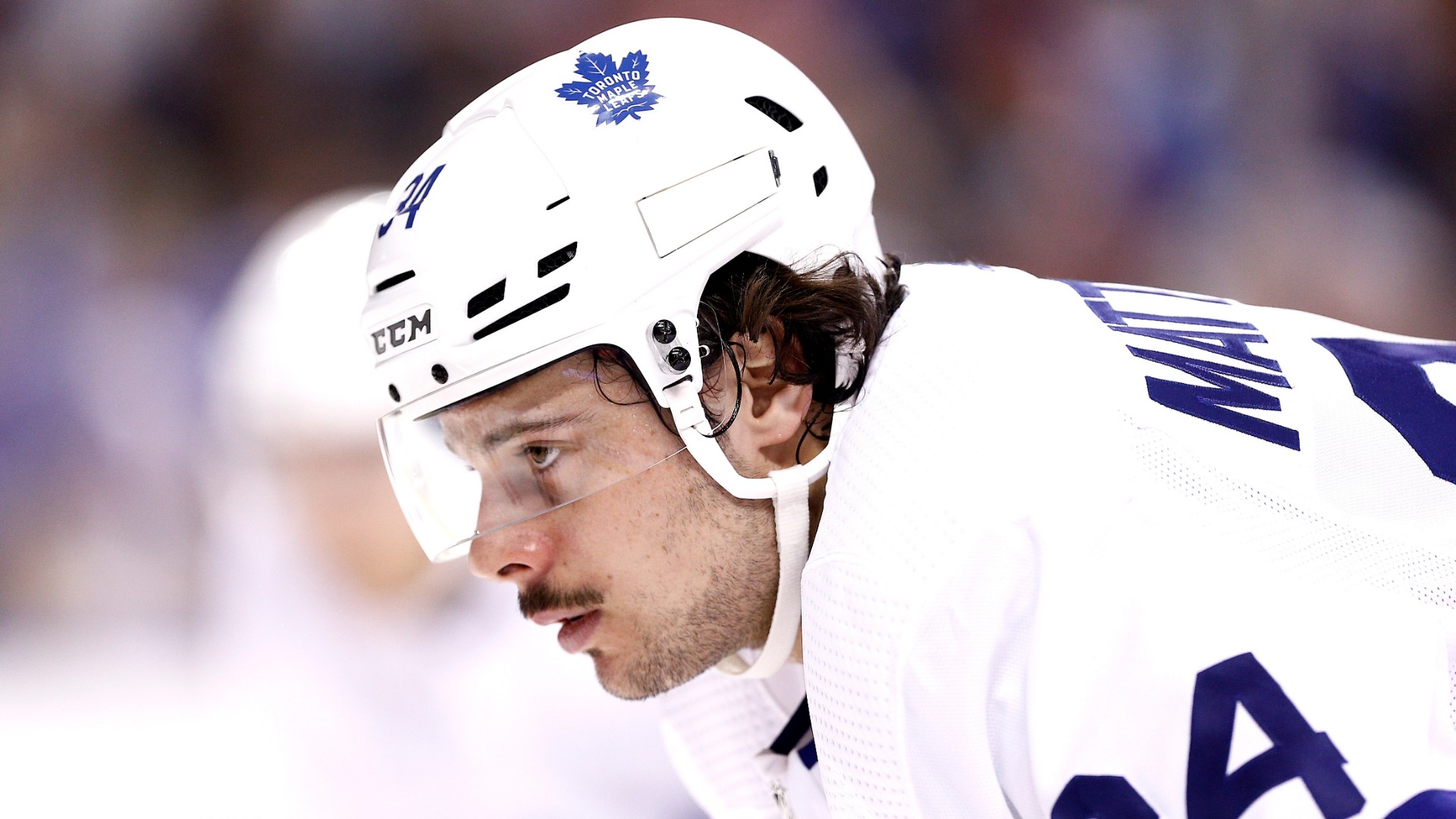
Inject this directly into my veins pic.twitter.com/L3FTPFr6r7
— Fris (@Frisbob1) February 11, 2021
When Auston Matthews entered the league, he rarely did this unless he was provoked by a hit or something. Now in his fifth season, he is noticeably more assertive and looks to initiate rather than react. Against the Canadiens, Matthews’ great forecheck led directly to a Mitch Marner goal.
Leafs improve to 11-2-1.
That's the fourth best start in franchise history and second best since 1940.
— James Mirtle (@mirtle) February 11, 2021
While I do think this is slightly inflated due to the division they are in and the new schedule format, it’s still noteworthy and puts things into perspective.
What’s going on with the NHL’s play-by-play data? Maybe nothing, but maybe not..?https://t.co/ZSWQ6gYuzb
— Travis Yost (@travisyost) February 11, 2021
This is an important and noteworthy article. There are some stats that I’ve read (or even had thrown back at me in arguments) that don’t really make much sense. We can use the numbers we’re getting as a baseline for conversation, but with the validity of them in question, we need to be a bit more skeptical of them and a bit more trusting of what we are seeing.
Mats Sundin turns 50 on Saturday … we don’t know where the time went, but we do have these 50 memories: https://t.co/fM7Yn1ByKq
— Lance Hornby (@sunhornby) February 13, 2021
I know there are mixed feelings towards Mats because of how his time as a Leaf ended, but he’s one of my favourite Leafs of all-time. Thanks for all the memories. Happy 50th.
5 Things I Think I’d Do
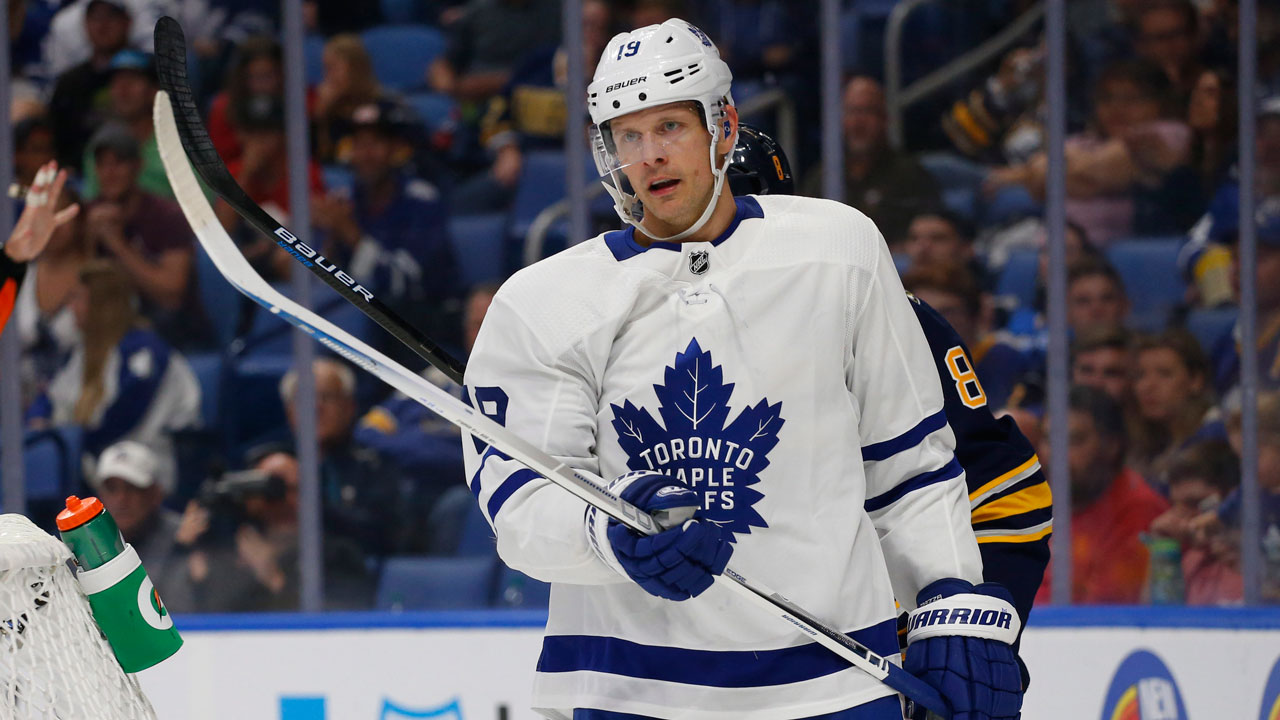
1. If I was Jason Spezza, I think I’d be quite confused as to why he toils on the fourth line while Joe Thornton is seemingly a lock to walk onto the top line when he returns. Since the start of last season, Spezza has played 72 games, putting up 13 goals and 33 points, while Thornton has played 75 games, tallying eight goals and 33 points. Spezza’s points per 60 the last two seasons – 2.4 and 3.4. Thornton’s – 1.7 and 1.6. ??And yet Spezza, who is four years younger, is a fourth liner, while Thornton is a first liner.
It almost feels like preferential treatment. While I don’t think either should be in the top six other than spot duty, I certainly wouldn’t lock one in over the other the way the Leafs have. If anything, they are two-thirds of a scoring fourth line that can be sheltered and moved up the lineup when necessary.
2. I think some of the criticism regarding Pierre Engvall is a little unfair. I like what his game brings overall and believe he should be a regular on this team. If, for example, William Nylander was struggling while playing next to Alex Kerfoot and Jimmy Vesey, all we would hear about is his linemates. I’m not sure what the expectations are here for an objectively worse player.
Engvall hasn’t received a ton of ice time that would allow us to start drawing conclusions based on the numbers, but we’ve seen him be an effective checker and penalty killer. It probably makes the most sense to play him with Ilya Mikheyev in a checking line once the team is healthier and can justify moving Mikheyev down to accommodate it.
3. I think I’d also start playing Pierre Engvall a little bit on the penalty kill. We’ve established that Mitch Marner can do it and is good at it, but does he really need to play nearly two-and-a-half minutes shorthanded each night in this division? That seems excessive.
4. I think it goes without saying that Michael Hutchinson should get one of the back-to-back games against Ottawa. I’d actually give him the first game of the back-to-back on Wednesday to give him the best chance of success.
5. I think I would try splitting up John Tavares and William Nylander — potentially giving each their own line — just to see what happens. They have been fine together, but they haven’t exactly been greater than the sum of their parts. If you have Tavares centering one line and Nylander centering another, what’s the worst that could happen in a trial run (it’s awful and you revert back)? They’ve played around 580 minutes together at 5v5 since the start of last season. How much more time do they need together?


